Mold in Closet
Do you open your closet door and find that there is a musty smell coming from inside? The chances are that there is an issue growing inside. If you store your damp towels or clothes using a hamper, they could be putting sufficient moisture into your closet to create a mold problem.
A leaking pipe behind the wall could be causing the moisture and feeding the mold growth. This could be a more significant issue then, as water can travel a long way throughout your home with a small leak without you realizing it.
Keep reading to gain more knowledge about mold growth inside your closets and how to prevent it from returning or forming in the first place.
What causes mold in closets?
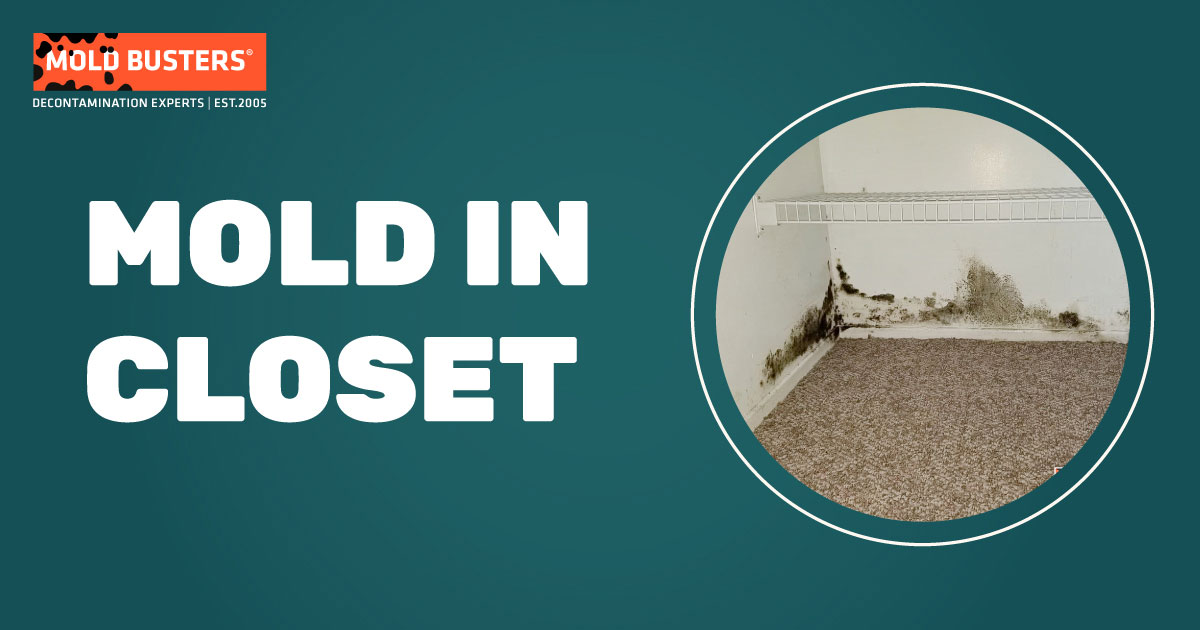
Mold can be caused by a number of things. Closets are dark, relatively warm environments that mold likes. Add in moisture from various sources, and you have an excellent place for mold to grow and thrive.
- One major cause of mold growth inside a closet is damp clothing. Whether it is clothing from the dryer that is not completely dry or towels and other items put inside the closet while still wet are one of the leading causes of mold growth.
- Another major factor for the growth of mold inside a closet is a water leak. Most bathrooms are backed by a bedroom with a closet. If pipe leaks inside the wall, the mold can grow because of the moisture and water coming through and sitting inside the closet. This can also cause growth in the items that are inside the closet as well.
- The third cause of mold is attic mold. Most homes these days have their attic hatch inside a closet, and these hatches are sometimes poorly insulated or not insulated at all. The cold, damp air from the attic combines with the warm air inside the closet, creating moisture on the hatch, and mold will grow on that and spread if not recognized quickly.
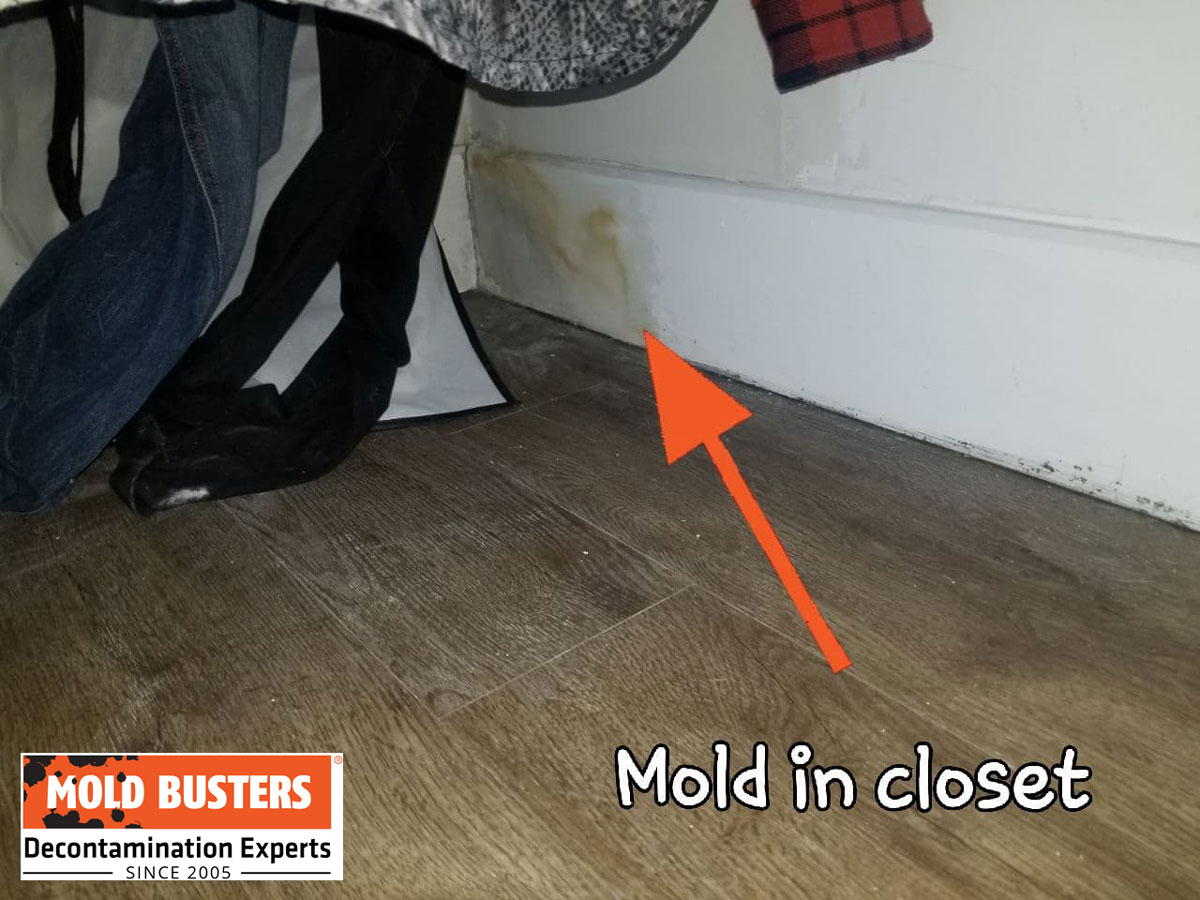
What are the signs of mold inside a closet?
Mold can grow on any number of items inside your closets, and you should be aware of what mold growth looks like on various items.
Mold on clothes inside your closet
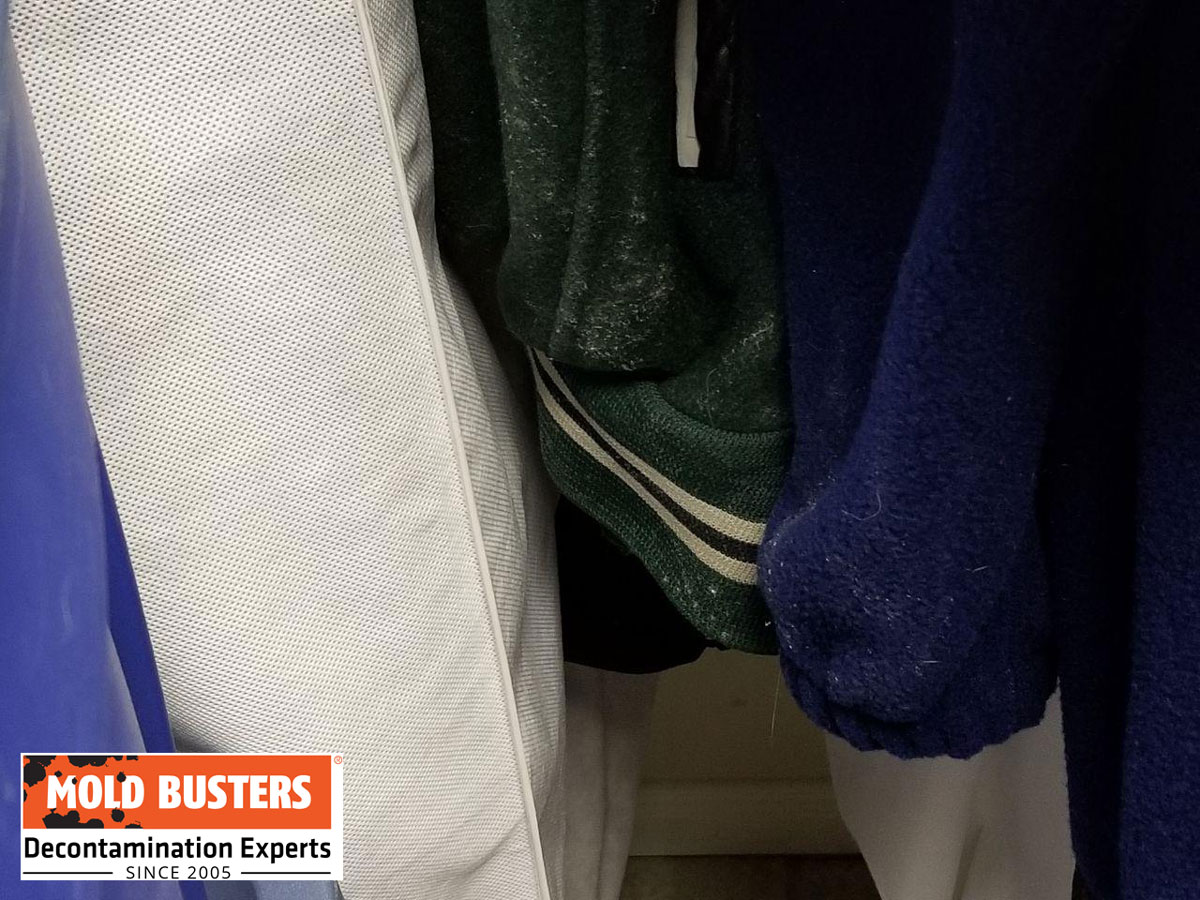
When clothing is put away inside a closet and is still damp, it is a great place for mold to form and grow. The clothing is damp; the closet is warm and dark to provide a nice environment for the mold. It will start with just one or two spots of various colors depending on the type of mold spore that is growing (we will discuss different molds that commonly grow in closets later in this article).
Once well colonized, the mold will grow quite rapidly to the point where it will damage clothing that has not been worn recently. If you see mold starting to grow on your clothing, you will need to have it professionally remediated. If removed incorrectly, it could spread to other places in your home. Contact Mold Busters to have the mold correctly removed from your closet.
Mold on shoes inside your closet
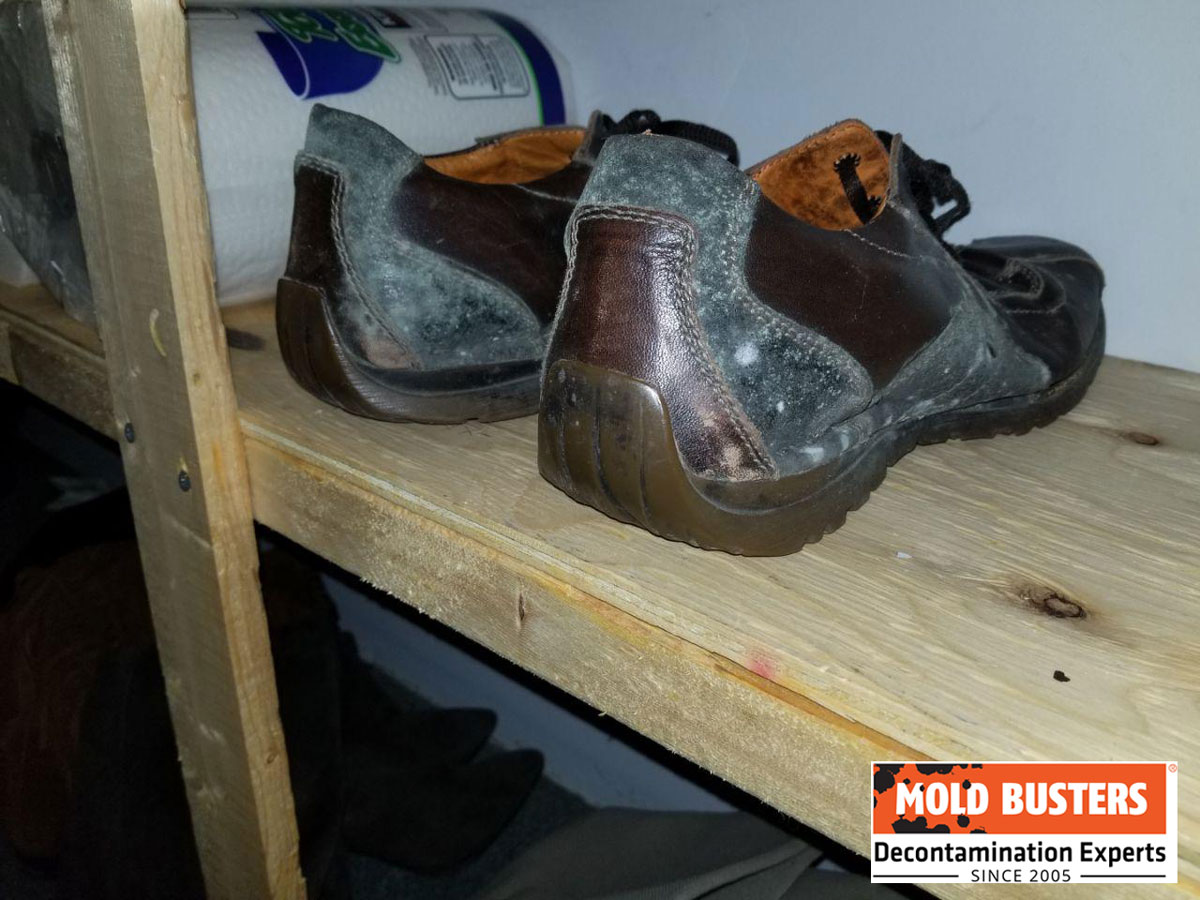
This follows the same rules as clothing inside your closet. If you put footwear inside your closet that is wet and damp, chances are you will see mold growing on them in the not-too-distant future. You must ensure that you dry your footwear entirely before storing them inside your closet to prevent mold growth from water, snow, sweat, and moisture on footwear from regular use.
Mold on the exterior and interior walls of your closets
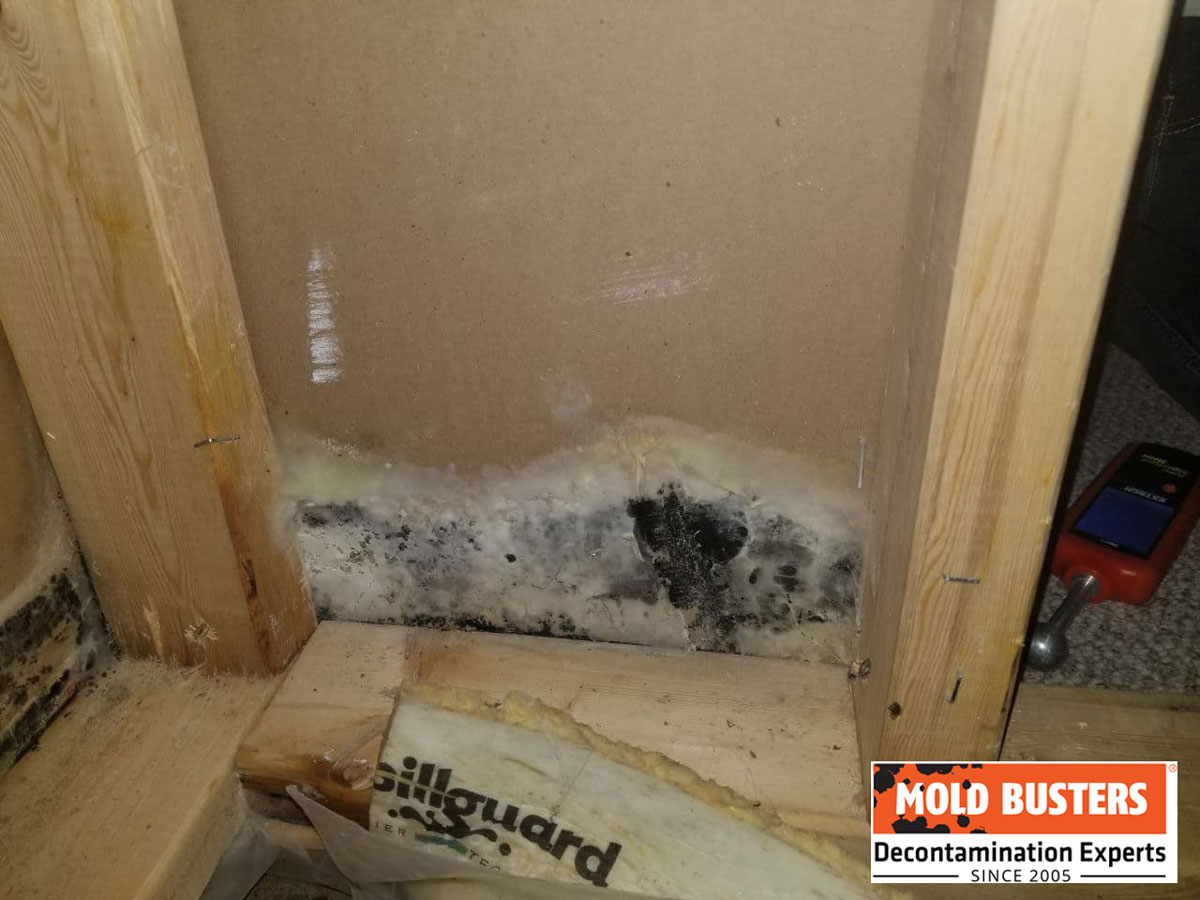
Mold loves to grow in dark, damp spaces. Closets are a great environment for mold for a number of reasons. It’s likely damp clothing that sits against the closet wall, creating a wonderful place for mold to grow. You don’t know it’s starting to grow until it is too late. Then you will need to remediate the mold correctly.
If there is a leaking pipe inside the wall and you see mold on the exterior of the wall, chances are you have a colony inside the wall that is twice the size of the growth you can see on the exterior wall. Mold likes darkness, and therefore, the wall cavity is one of mold’s favorite places to grow. You can use this knowledge to assess your situation. Calling Mold Busters to test and remediate the mold is your best course of action. That way, you are confident the mold will not spread to other home areas by improper techniques. You can also take advantage of our virtual inspection services for a quick and convenient assessment.
Mold in sump pump closet
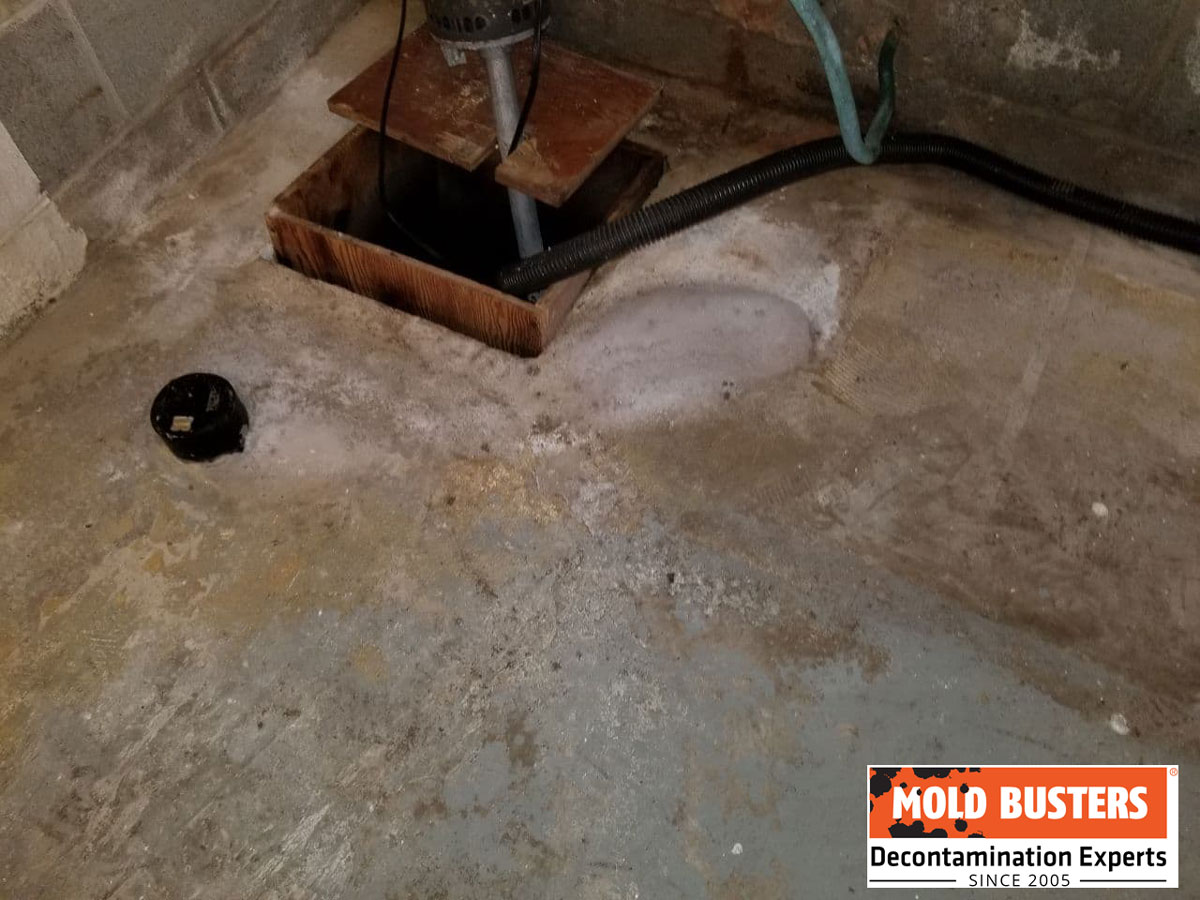
Having a sump pump in a basement closet is an ideal place for mold, as you have an open water source with the sump. If the humidity is high from the sump inside the closet, mold will colonize the walls and ceiling, causing a real health issue in the closet area. Installing a low-wattage incandescent lightbulb with a sump pump would be a great way to cut down on humidity inside the closet, as the light will create enough heat to “dry out” the closet. Just make sure there are no items around the light to create a fire hazard.
Mold in water heater closet
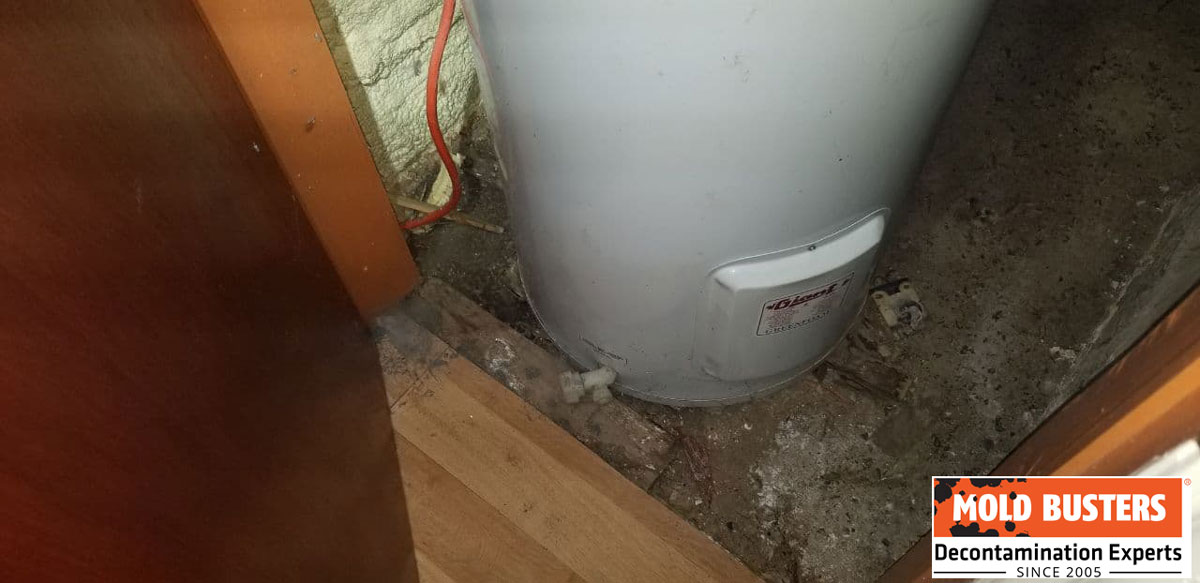
A closet or small storage area with a water heater inside presents another great environment for mold growth. Sometimes, a water heater will purge extra pressure and create some steam and water. This will disperse the walls and ceiling of the closet and start the mold growth process. This water is hot, and the tank/heater creates some heat to speed up the growth of the mold. Prevention is similar to having a sump inside the closet. Use a low-wattage light bulb to create a bit of dry heat to cut down on the humidity inside the closet. Vent the blow-off valve to a drain using a hose as well so that if it does release, the water goes directly to the drain.
The main thing to remember is to check all closets in your home once a week to ensure you do not have any growth happening. If you do, contact Mold Busters to inspect and remediate the affected areas.
What does mold inside closets look like?
Mold inside a closet can take on many forms. It can be of various colors and “textures”. Some could be black and circular in growth pattern, while others can be dark green and have a hairy look. White mold is another mold that frequently grows in residential closets. You should be aware of what these look like and have a basic knowledge of what to look for. Once identified, a Mold Busters professional should be contacted to inspect the area.
What type of mold can grow inside closets?
In reality, any mold can grow inside a closet under the right conditions. Three major types of mold are more common than the others that grow inside closets.
Black mold in closet
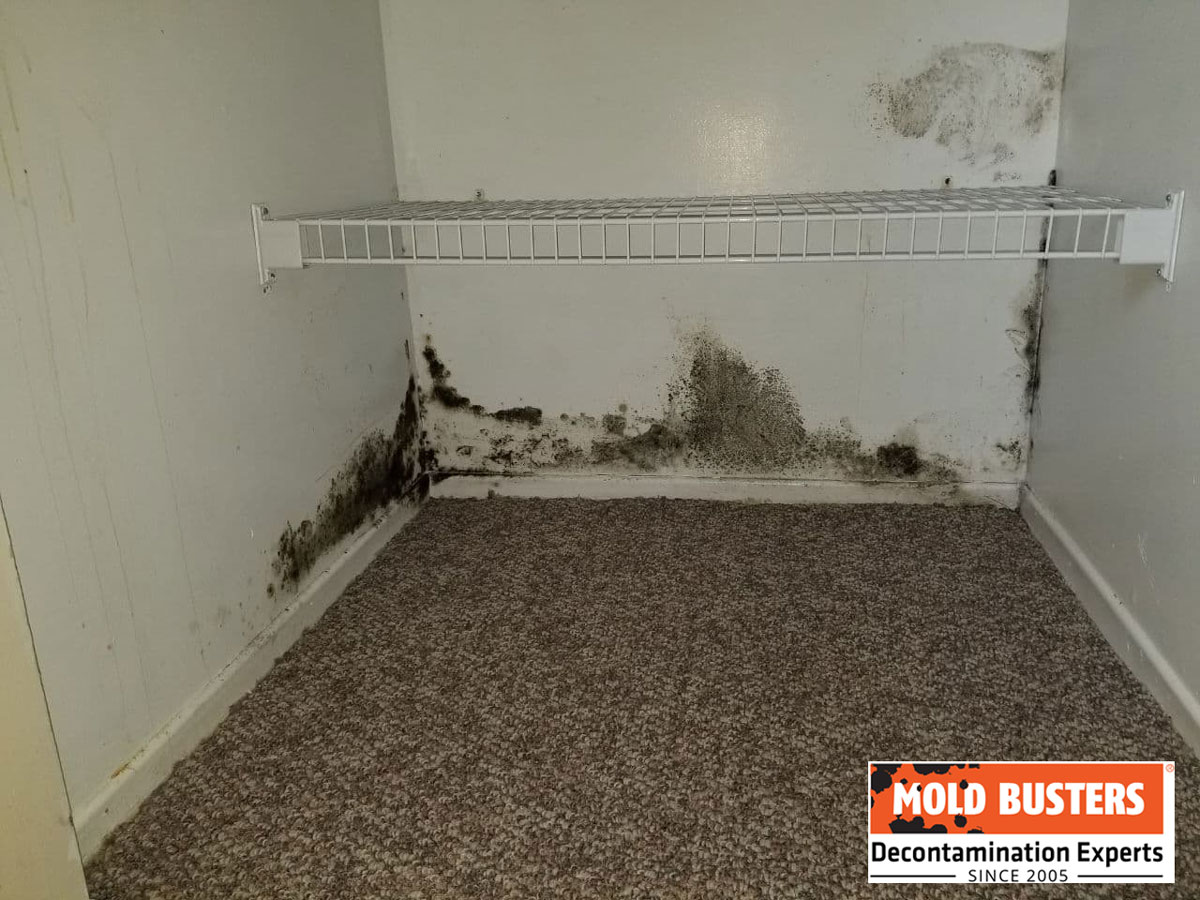
Black mold usually grows in a spotty pattern starting off then forming a circular pattern or pattern as it spreads. Various mold types are black, so some or all are dangerous or harmless is not known until properly tested.
Green mold in closet
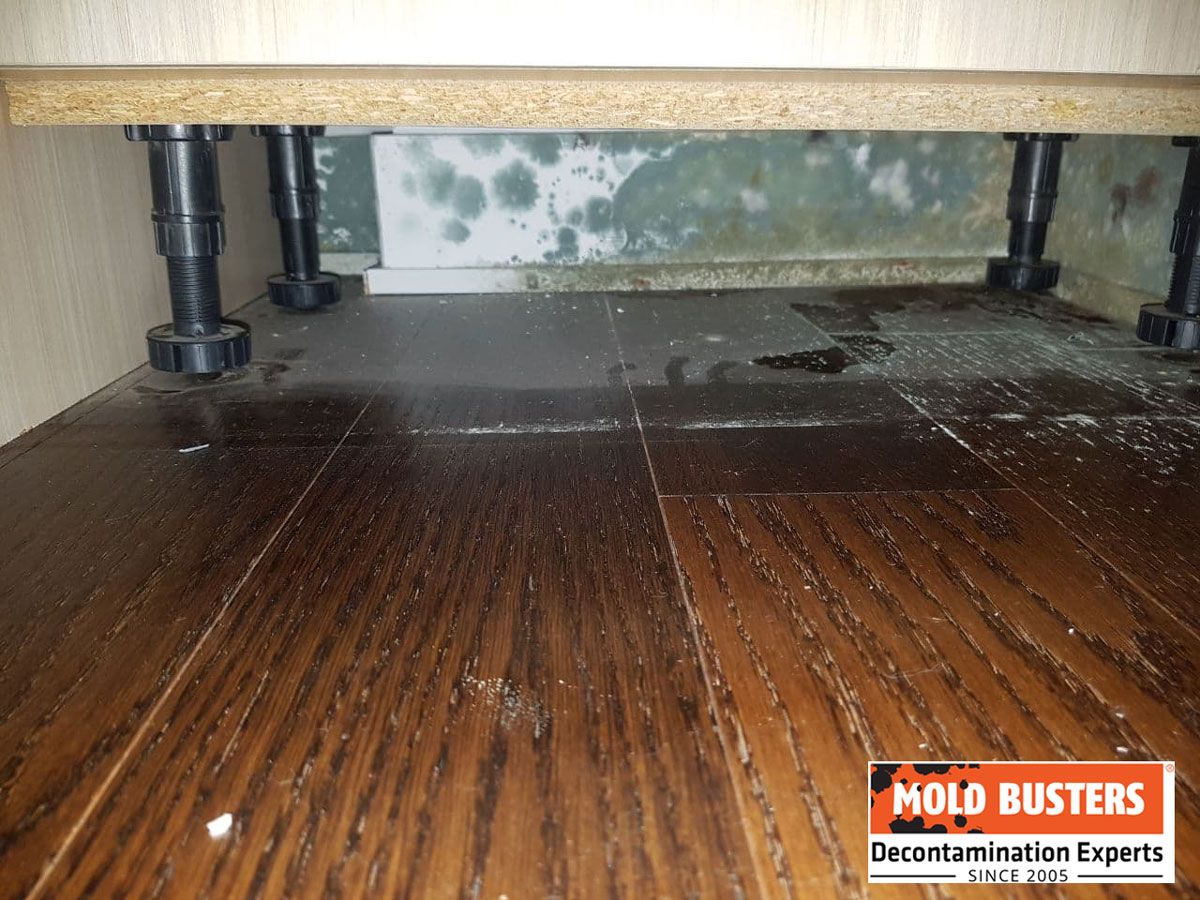
Green mold will start as a green discoloration and spread to a vertical growth pattern. If not discovered for some time, it will look hairy and string-like.
White mold in closet
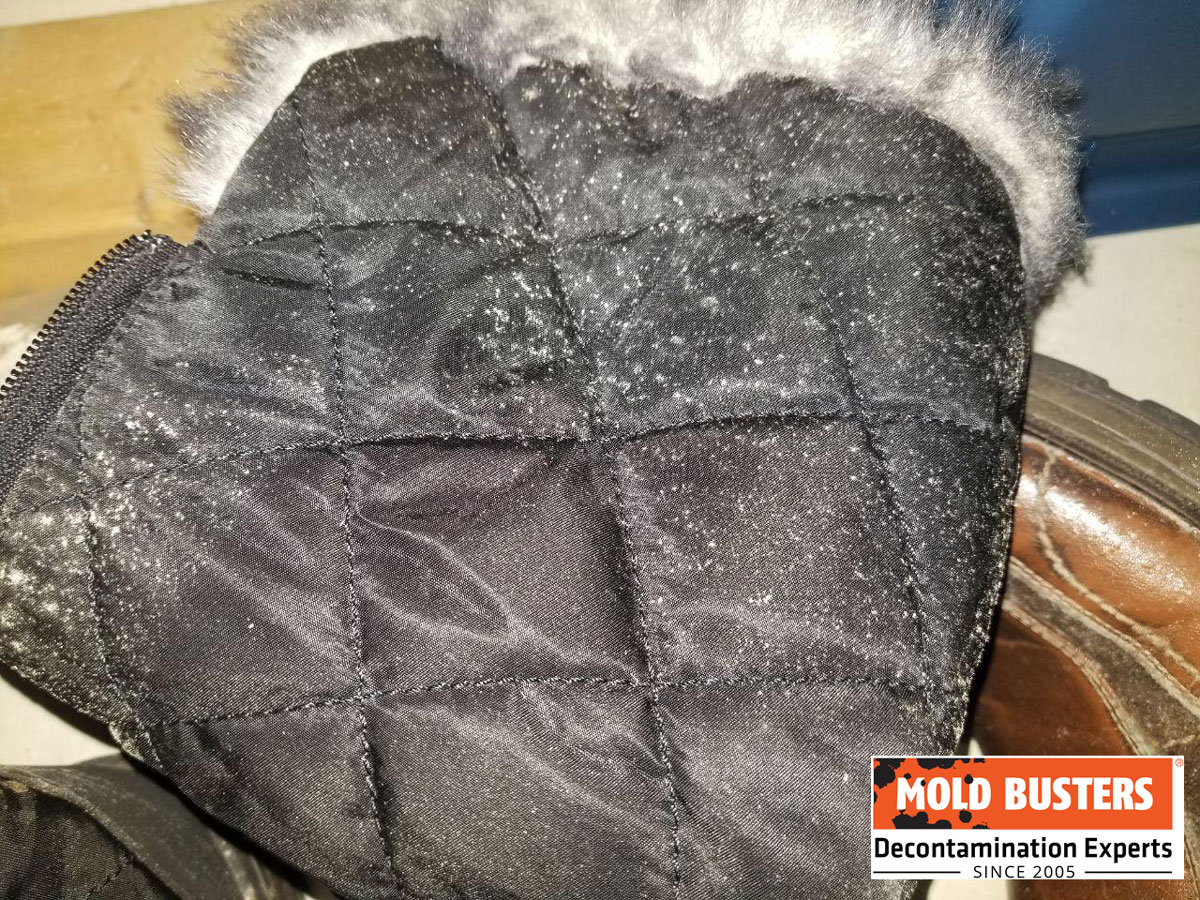
White mold has a crystalline or foamy growth pattern. Depending on the species of mold that is growing, it can grow in little “clumps” or a larger formation.
No matter the type or color, do not disturb the mold growth and contact Mold Busters right away to schedule an inspection to ensure your home is safe and healthy. We have offices in various locations, including Montreal and Ottawa, to serve you better.
Is mold in closets dangerous?
As with any mold growth anywhere in your home, mold in a closet could be harmful to your health. In reality, you cannot tell whether mold growth is dangerous or not, and testing is the only way to know what type of mold is growing inside your closets. Contact Mold Busters to get a sample taken and tested to ensure what type of mold is growing inside your home.
How to prevent mold in a closet?
Preventing mold in your closets is relatively simple. First, do not put wet or damp items in your closet, and the moisture creates the proper environment for mold growth. Next, you can put a desiccant in the closet, and silica packets are great ones to use and are readily available. Thirdly, install a low-wattage incandescent light bulb inside the closet and leave it on. This creates a dry, warm heat that will drop the humidity and moisture inside the closet and lessen the chance of mold growth.
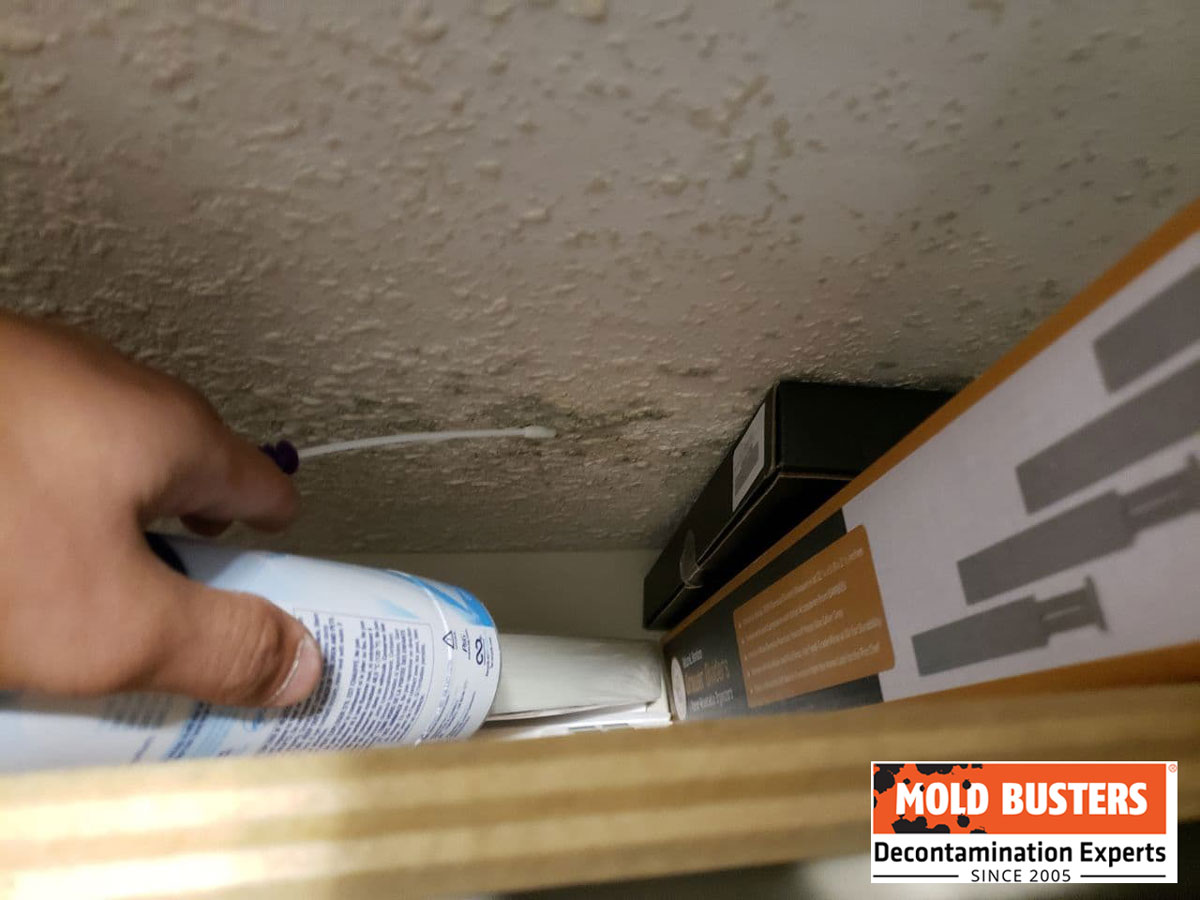
How to get rid of mold inside a closet?
As with all forms of mold, removing mold on the structure of a closet is best left to professionals at Mold Busters. It’s advised that homeowners not remove mold colonies inside their homes as mold spreads easily and could be dangerous. Without proper techniques and personal protective equipment, you could be making yourself and your family sick. If there is a bit of mold growth on some clothing items, remove them, wash them thoroughly, and make sure they are completely dry before putting them back into the closet.
Frequently asked questions
What can I put in my closet to prevent mold?
To prevent mold inside your closet, you can install a low-wattage incandescent light bulb and leave it on at all times. This will create a dry heat source and keep the humidity and moisture low inside your closet. Also, a few desiccant packs placed around will help dry out the closet as well. Just remember to replace them periodically, so they continue working.
How can I remove the moldy/musty smell from my closet?
To remove the smell, you need to eliminate the source of the smell. Determining where the smell is being created is best left to the professionals at Mold Busters. They are trained professionals who know what to look for inside your home regarding mold and moldy smells. Contact Mold Busters today to book an appointment.

Get Special Gift: Industry-Standard Mold Removal Guidelines
Download the industry-standard guidelines that Mold Busters use in their own mold removal services, including news, tips and special offers:
"*" indicates required fields
Published: November 8, 2021 Updated: August 3, 2023

Written by:
Steven Adams
AMRT, WRT, ASD
Mold Busters
Fact checked by:
Michael Golubev
CEO
Mold Busters
